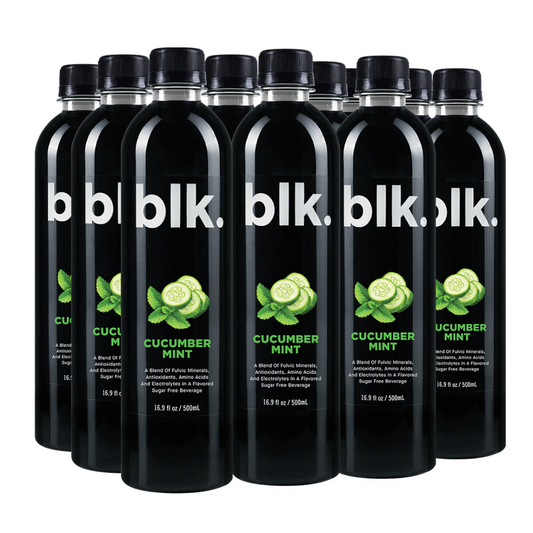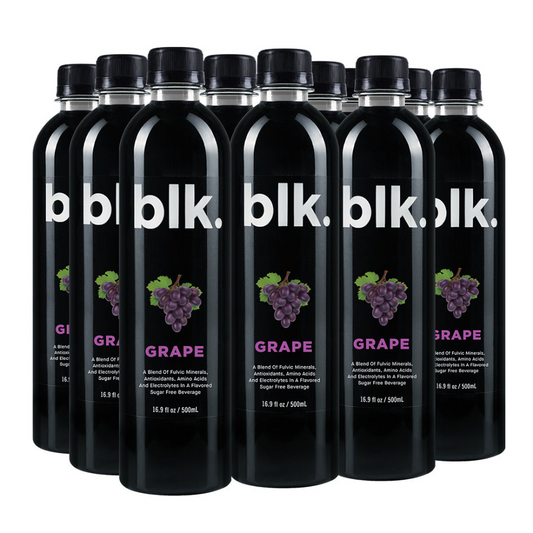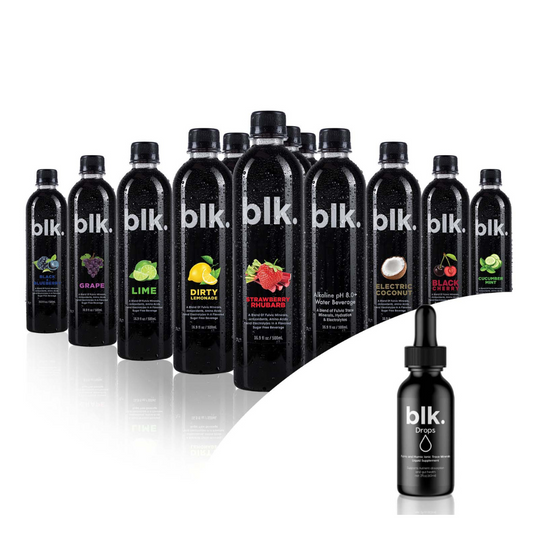
Protein Bar Ingredients: What to Look For or Avoid
This Guide Seeks To Answer The Following:
- The ingredients to look for in a protein bar
- The ingredients to avoid in a protein bar
- How to make home-made protein bars
- How to incorporate protein bars into your diet
Overview of Protein Bars
Those who want to supplement their protein intake have many great options to choose from. Besides protein powder, there are protein bars, which are nutrition bars with high protein, carbs, vitamins, and mineral content. These delicious and healthy protein options can be used as dietary or gym supplements. You can take them before or after a workout session and in between meals for appetite control, better athletic and workout performance, and faster muscle recovery. However, despite all the benefits we stand to gain, protein bars cannot replace whole foods and should only be used as supplements.
Now that you have an overview of protein bars let’s learn about their ingredients and what to look for before picking one.
What to Look For in Protein Bar Ingredients
You should get a product with healthy fats, high protein content, fiber, and natural sweeteners to get the most out of protein bar supplementation.
High Protein Content
One of the ingredients worth looking out for in a protein bar is protein. For adequate protein supplementation, it is recommended that your protein bar offers roughly 10g of protein, which can help you meet the recommended daily protein intake threshold.
Protein plays an important role in muscle growth and recovery thanks to branched-chain amino acids, such as leucine, which stimulate protein synthesis in high quantities leading to improved muscle growth and recovery. Other protein benefits include enhanced immune function, recovery, and lean body mass maintenance.
Some recommended protein sources for protein bars include whey, casein, pea, and soy. Whey and casein are animal-derived sources with all the essential amino acids the body cannot produce. Pea and soy protein are plant-derived, and even though they may not have a high amino acid profile, they are still the best options for people with different allergies, such as milk.
Natural Sweeteners
Some common natural sweeteners used in protein bars include dates and honey. They are usually easily digestible, rich in antioxidants, and do not cause stomach upsets, which makes them better than artificial sweeteners such as stevia.
Dates are collected from date palms. They are a good source of fiber, potassium, and other minerals that can help lower blood pressure. They are also used as binding agents for bars, thanks to their low moisture content. Dates can also help with glycemic control when used on diabetic patients.
Honey is obtained from bees and is a good source of antioxidants. It also acts as a binding agent. Some of the uses of honey include blood pressure management, heart health improvement, and chronic wound management.
Some benefits of natural sweeteners over artificial ones include no aftertaste or side effects such as allergies, weight gain, severe digestive problems, and an increased risk of obesity.
Healthy Fats
You should pick a protein bar with lots of healthy fats. Some of the roles of healthy fats in a balanced diet include providing essential fatty acids to the body, promoting the absorption of vitamins A, D, and E, and energy production, which explains why unused proteins and carbs are often converted into fats.
Some recommended sources of healthy fats in protein bars include nuts and seeds. Seeds have high concentrations of omega-3 fatty acids and can reduce the risk of heart disease. Most seeds also have alpha-lipoic acid, known for its antioxidant properties. Nuts contain unsaturated fats, which can lower cholesterol levels.
Fiber
Your choice of protein bar must also contain good amounts of dietary fiber, which promotes digestion and keeps us feeling full for a relatively longer duration. High-fiber diets have also been found to lower cholesterol levels, help maintain bowel health, normalize bowel movements, help regulate blood sugar levels and promote healthy weight management. Insoluble fiber, one of the subcategories of dietary fiber, helps with digestion by promoting food movement through the digestive system and helping prevent constipation.
Recommended sources of fiber for protein bars include chia seeds, flax seeds, and oats. Oats, for example, are rich in antioxidants and can help lower cholesterol levels. Other benefits include aiding in blood sugar control and weight loss management thanks to its satiating effect, and helping to relieve constipation.
What to Avoid in Protein Bars
Some ingredients to avoid in protein bars include artificial sweeteners, trans fats, high sugar content, and artificial colors and flavors.
Artificial Sweeteners
Artificial sweeteners are usually known as sugar sweeteners or sugar substitutes. Even though they are sweeter than sugar, they have fewer calories since most of them are not metabolized completely. Some artificial sweeteners approved by the FDA include saccharin, advantame, acesulfame potassium (Ace-K), luo han guo fruit extracts, neotame, aspartame, and sucralose.
Some of the potential health risks associated with these artificial sweeteners include the following:
- Increased risk of diabetes: Excessive consumption of sucralose, an artificial sweetener, can lead to diabetes, as discovered by a Diabetes Care journal.
- Weight gain: Even though artificial sweeteners have fewer calories than sugar, their consumption has been linked with weight gain. Consumption can also increase the risk of developing hypertension, type 2 diabetes, metabolic syndrome, and cardiovascular disease- conditions you should avoid.
- Leaky gut: Our bodies can't fully metabolize artificial sweeteners, which normally travel through the gut and cause damage. Splenda, an example of an artificial sweetener, has been found to cause a significant reduction in gut health and increased fecal pH.
Other health risks include Crohn's disease, irritable bowel syndrome, and the generation of toxic or carcinogenic compounds when exposed to heat.
Some alternatives to choose from include stevia, also known as the sheet herb; raw honey, maple syrup, coconut sugar, and blackstrap molasses. Most of these alternatives are rich in antioxidants, vitamins, and minerals such as potassium, zinc, and calcium.
Trans Fats
Trans fats, commonly known as trans-fatty acids, increase the levels of bad cholesterol in the body and lower the good ones, predisposing us to heart disease when consumed. The addition of sources of this type of fats to foods and beverages has been prohibited by the United States Food and Drug Administration (FDA).
Consumption of trans fats increases the risk of stroke, heart attacks, and type 2 diabetes, which explains why you should avoid any protein bar with high contents. Trans fats increase the levels of low-density lipoprotein (LDL) cholesterol, which can make arteries hard and narrow by building up on the walls.This can lead to a heart attack.
High Sugar Content
High sugar intake has several negative effects on our health. Studies have found that excessive sugar intake increases the risk of dying from cardiovascular diseases. Even though scientists have not yet clearly established how this happens, indirect connections include the fact that high sugar intake overloads the liver, which can, over time, lead to fatty liver disease owing to poor sugar metabolism. Fatty liver acid, one of the biggest contributors to diabetes, increases the risk of heart disease.
High sugar intake can also lead to increased blood pressure and chronic inflammation, which are major causes of heart disease. Other health-related risks of consuming too much sugar include possible weight gain and diabetes, which increases the risk of stroke and heart attack. What, then, is the recommended sugar intake?
According to the American Heart Association, the right amount of sugar should be less than 100 calories daily for women and not more than 150 for men, which translates to 6 and 9 teaspoons, respectively. All in all, avoid protein bars with added sugar to be on the safe side.
Artificial Color and Flavors
Even though some manufacturers use artificial dyes in their products to make them look more presentable and inviting, they are not recommended. The same applies to artificial flavors, which can lead to high sugar intake, whose negative effects we have covered above. Artificial colors can be linked to several conditions, such as asthma, hives, hyperactivity, behavioral changes like depression, and the development of tumors, given that some widely used artificial flavors have benzene, a carcinogenic substance.
Check nutrition labels before buying a protein bar, and settle for options that use natural food coloring derived from fruits and vegetables. Healthy alternatives, in this case, include blueberry juice, beets, and beta-carotene. Alternatively, make your protein bars at home to avoid such additives.
Home-made Protein Bars
Did you know that you can make protein bars in the comfort of your home? Before we look at a few recipes, here are the benefits you stand to gain by doing that:
- Saves money: Making protein bars right from your kitchen will save you money, especially since these supplements don't come cheap. You will only need some oats, protein powder, nuts and seeds, and ingredients that are most likely stocked in your pantry, such as honey and salt.
- Full control of the ingredients: Making protein bars at home means you can dictate what is included in them, giving you a chance to prepare something healthy. You will avoid surprises such as artificial flavors, high sugar content, and artificial sweeteners, which all have negative health effects. You will also be able to include ingredients that do not stir up your allergies or sensitivities.
- Customize the taste: Making your protein bars allows you to tailor them to your chosen taste. For example, you will have a chance to use dates if you love dates but hate honey and vice versa. You can also use almonds instead of cashews and so on, instead of going around looking for a brand that incorporates what you like in their products.
- It is easy: Despite what people think, making your own protein bars is easier than it seems. Most recipes do not require baking, meaning you don't have to be extremely careful. You can also easily customize no-bake recipes and get a flavor of your liking as long as the texture is okay.
Home-made Protein Bar Recipe
Here is what you need if you are thinking of making home-made protein bars:
- Gluten-free oats
- Peanuts
- Whole almonds
- Honey or maple syrup if you are vegan
- Walnut halves
- Sunflower seeds
- A pinch of salt
- 100% almond butter
- Sultanas
Once you have all the above ingredients in the right measurements (measurements should depend on the number of protein bars you want to make), do the following:
- Use a large mixing bowl to combine the dry ingredients
- Mix the honey or maple syrup for vegans with almond butter and water in a separate bowl until they form a smooth paste
- Combine the ingredients in step 2 with those of step 1 and stir till properly combined
- Use greaseproof paper to line a square baking tray and put in the mixture
- Ensure that the mixture creates an even slab within the tray by firmly pressing it down
- Freeze the tray for roughly one hour
- Once frozen, remove the tray in the freezer and divide the final product into equal bars
Store the bars in an airtight container or a zip-lock bag to ensure they stay fresh.
How to Incorporate Protein Bars into Your Diet
To incorporate protein bars into your diet and fully benefit from their advantages, consider using accompaniments such as peanut butter, coconut yogurt, fruit salad, and avocado toast.
You can dip the bar into peanut butter to benefit from a range of good fats or slice your bar and add it to a bowl of coconut yogurt and combine it with a few fruits or your favorite nuts.
Alternatively, you can use your protein bar as a dessert after consuming whole-grain avocado toast. Lastly, consider chopping up your protein bar and adding it to your fruit salad for added texture.
Recommendations for When to Eat Protein Bars
The best time to eat protein supplements is usually determined by a person's health or fitness goals. For example, have a protein bar post-workout for muscle growth and recovery or between subsequent meals to take care of its satiating effects if you intend to lose weight.
Conclusion
Having a protein bar is a great way of boosting the body's protein intake. These delicious and easy-to-make supplements have a range of nutrients, such as healthy fats, proteins, and carbs which the body requires for optimal performance.
Always make sure that you read the nutritional label before getting a protein bar!
Frequently Asked Questions
-
Are All Protein Bars Created Equal?
-
What are Some Natural Sweeteners That I Can use in Protein Bars?
-
Are There Any Gluten-free Protein Bars?
-
Is It Okay to Eat Protein Bars Before Going to Bed?
-
Can Protein Bars Be Bad if You Eat Too Many?




